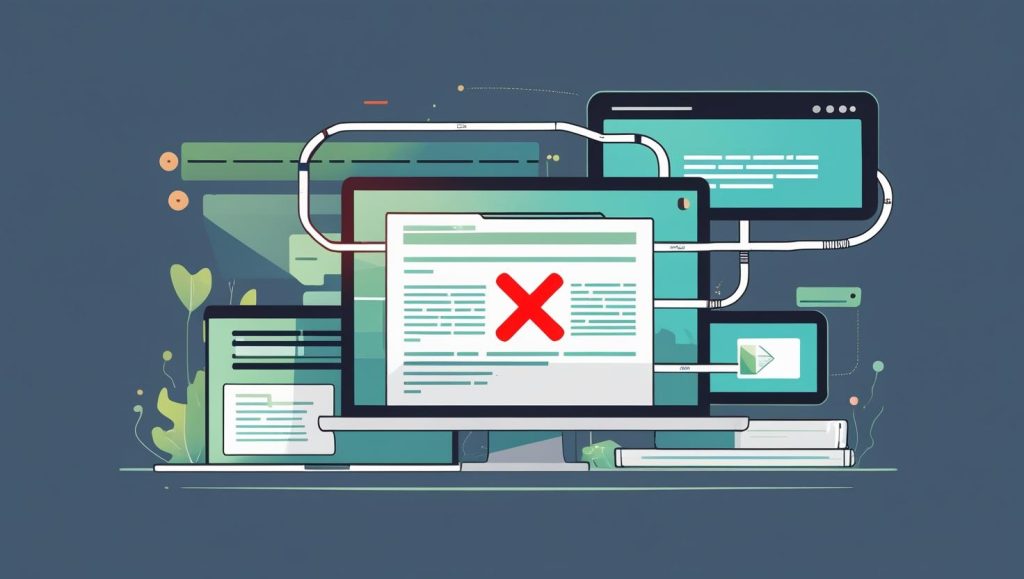Academic publishing is a commitment. When an author submits an article to a scientific journal, they enter into a formal relationship with the editorial board. However, it is not uncommon for some authors, for various reasons, to decide that they no longer wish to continue with the editorial process. This situation raises a valid question: is it possible to withdraw an article already submitted to a scientific journal, provided it has not yet been published?
The answer is yes, but it calls for caution, ethical justification, and adherence to editorial standards.
What are valid reasons for requesting the withdrawal of an article?
Authors may encounter various situations that lead them to request the withdrawal of their manuscript. Here are some of the most common and accepted reasons:
1. Lack of response from the journal
One of the most frustrating situations for authors is not hearing from the journal, such as no confirmation of receipt, no assignment of reviewers, and no update on editorial progress, even after several months. Due to this silence, authors may wonder if they can submit their manuscript elsewhere. However, it's not enough to assume their submission has been tacitly withdrawn. In these cases, the proper course of action is:
- Formally contact the editor to request withdrawal of the manuscript.
- Wait for written confirmation before proceeding to submit the article to another journal.
The Committee on Publication Ethics (COPE) indicates that the lack of a response does not release authors from their responsibility to verify withdrawal, since the initial submission implied an editorial commitment.1.
2. Serious errors in content
It may happen that, after submission, the author finds methodological errors, interpretation problems, or even ethical issues in the study design. If these errors undermine the validity of the work, it is appropriate to request the withdrawal of the manuscript for further review.
3. Change of decision regarding the selected journal
Some authors, after learning more about the journal following submission, discover unexpected conditions such as:
- Article processing charges (APCs) were not clear.
- Lack of indexing in key databases for their field.
- Thematic scope or readership is not aligned with the objective of your research.
These cases highlight the importance of thoroughly familiarizing yourself with the journal before submitting an article. Reading the editorial policies, reviewing the publication history, and consulting the indexing services are essential steps.
4. Problems with co-authors
Disagreements may occur among co-authors, such as when one is unaware of the submission or has not approved the final version of the article. In these situations, and if there is no consensus, withdrawing the manuscript is usually the most ethical option, especially to avoid academic conflicts.
5. Unintentional simultaneous submission
Although submitting the same article to multiple journals simultaneously is strictly prohibited, sometimes it happens unintentionally. If the author openly admits the mistake, they should notify both journals and formally request withdrawal from one, preferably the one that has not yet started peer review.
What do ethical policies say about article retraction?
According to COPE, authors can request to retract their articles, but this is not an automatic right. The final decision depends on the stage of the editorial process and the editor's discretion. If the manuscript has already been reviewed, edited, or accepted, the journal is not required to accept the retraction1,2.
COPE has documented several cases where authors request withdrawal simply because the review was demanding or because the journal took longer than expected. In many of these instances, the editorial boards rejected the request, as there was no compelling ethical justification1.
It should also be noted that each publisher has its own policies in this area. For example, Elsevier recognizes that there are cases where a request for article withdrawal may be made but emphasizes that it will only be approved under justified conditions: fundamental errors, discovery of plagiarism, simultaneous submission, or ethical violations3. Additionally, it points out that articles already accepted for publication cannot be withdrawn unilaterally by the author.
What steps should be taken to withdraw an article from a journal correctly?
If, after examining the reasons and assessing the process's status, you choose to request withdrawal, we recommend that you follow this procedure:
- Review the journal's policies: many specify in their instructions to authors how withdrawal requests should be handled. Some have standard forms or require all authors to sign the request.
- Write a formal letter to the editor: explain the reasons for your decision clearly and ethically. Include the title of the manuscript, submission ID, date of submission, and the signatures of all co-authors.
- Wait for confirmation before taking action: do not consider the article withdrawn until the journal confirms this in writing. Submitting the manuscript to another journal without this confirmation is regarded as simultaneous submission, a serious ethical breach.
- Keep copies of all correspondence, as having proof that withdrawal was formally requested can protect your academic reputation in the event of future disputes.
What are the risks of requesting the withdrawal of an article inappropriately?
Requesting a withdrawal inappropriately can have consequences such as:
- Editorial block: some journals may refuse to accept future manuscripts from the author.
- Reporting to the institution: In cases of misconduct, editors may notify the author's university or research center.
- Reputational damage: Editors and reviewers may consider the author's conduct unprofessional, especially if it was not handled transparently.
Responsibility from the first click
Retracting an article is a valid option when ethical or technical issues justify it. However, it should not be taken lightly. Submitting a manuscript establishes a formal relationship with the journal and requires commitment. That is why ScholarEdit Academy recommends that you:
- Read the editorial policies carefully before submitting your manuscript.
- Make sure you know whether the journal charges APC, whether it is indexed, and what its withdrawal policy is.
- Request withdrawal in writing and with ethical support if necessary.
- Request withdrawal in writing and with ethical support if necessary.
Responsible publishing begins before you hit the “Submit” button.
Sources
- COPE. Case: Withdrawal request by author. https://publicationethics.org/guidance/case/withdrawal-request-author
- COPE. COPE position statement: Handling author requests to remove their submission. https://publicationethics.org/guidance/cope-position/handling-author-requests-remove-their-submission
- Elsevier. Article Withdrawal Policy. https://www.elsevier.com/about/policies-and-standards/article-withdrawal




